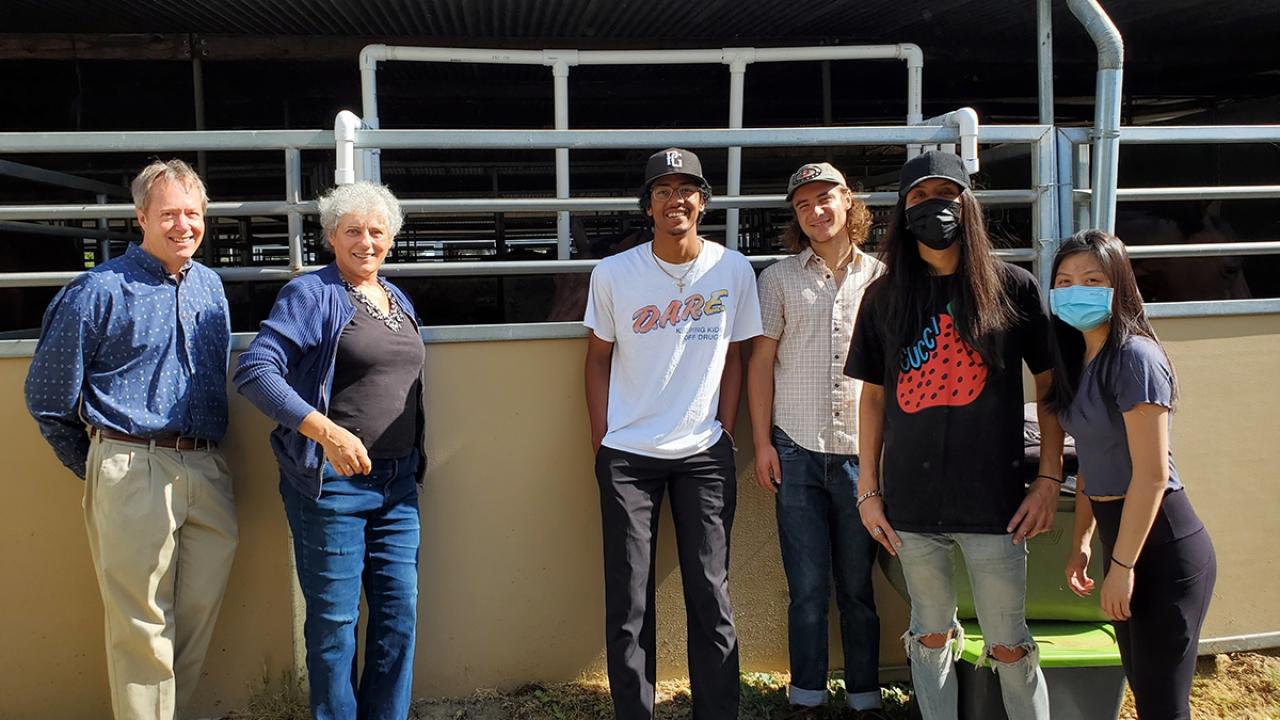
Horsing Around with Music
Student engineers create device so horses can choose their own music
Though animals respond well to music, humans are usually the ones to choose it. To change this, a senior design team in the College of Engineering developed a device that lets horses choose which music they want to listen to.
The team’s client, Susan Keen, a professor in the Department of Evolution and Ecology, wanted to give horses in stalls or undergoing medical treatments more agency, as they can get bored in captivity without enrichment. There’s a precedent for animals enjoying music. Studies of dairy cows have shown that playing classical music lowers stress levels, and yields higher volumes of milk. What’s more, many people play music for dogs who are left home alone. As for horses?
“Well,” says Keen, “They’re very sound sensitive.” Though many horses play with toys - usually ropes or large balls that require substantial room to use - their options for enrichment aren’t numerous, and many are food-centric. So, were there better options? Or at least additional ones?
Keen’s own horse, Monte, was the catalyst.
“I kept wondering what kind of music he might like.” says Keen. “Would he like jazz? Rock and roll? Opera?”
This formed the basis of the project she proposed to the senior design course seminar. The goal was simple, though not uncomplicated to execute. Said Keen, “I wanted the students to build something that would allow the horses to select what they heard from at least a couple of choices.”
After a fair amount of trial and error, as well as advice from David Slaughter, a professor in the Department of Biological and Agricultural Engineering, the team built a lightweight, portable frame with three positions, bounded by PVC pipe and an ultrasonic sensor. A horse could walk into the frame, and, using its position to select which song would play, actually choose the music it wanted to hear.
A spirit of innovation
This real-world project came with its share of surprises and challenges for the team. One such obstacle was moving the sensors from an indoor setting to an outdoor one. In the engineering lab room, the device’s sensors worked perfectly, but in the horse stalls themselves, which had an abundance of natural light, the laser sensors were quickly overwhelmed.
True to the nature of innovators, the students redid connections, wiring, and programming numerous times until the devices functioned correctly.
“I liked how open-ended this project was,” said biological systems engineering major and team lead Shawn Lupo. “We didn’t have anything that we were building on and we had to start from the ground up. It felt like this was a true engineering experience.”
A horse DJ
How does the device itself work? When a horse walks into position, it trips the device’s laser sensor, which starts playing one of three pieces of music—two jazz and a lullaby. From there, the horses could pick a favorite song, or switch between them. As part of the project’s reporting, the team also tracked how long each horse listened to individual pieces to determine which songs were the most popular.
“Since humans have different personalities and different tastes in music, we wondered if that applies to horses, too,” said Lupo.

The team—Lupo, Andrew Butler, Elijah Stockwell and Melanie Siu—tested the device with five horses at the UC Davis Equestrian Center, working with Assistant Professor Amy McLean. Initially, the horses were either afraid of the device or confused by it, but they got the hang of it before long. When the team left for a brief period and let a horse freely use the device, the horse listened while alone.
“It was really a rewarding experience,” says Keen, “to watch the students create these devices, and to see the horses learn how to use them, and to seem to enjoy them.”
To the team’s knowledge, the device is the first of its kind and it will play a role in future research at UC Davis. The team wants to continue developing the device to include more effective sensors, visual cues and feedbags so the horses can eat while they’re listening
Media Resources
- A version of this story appeared first in Engineering Progress magazine.
